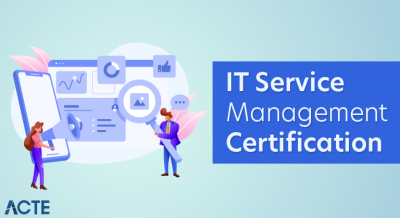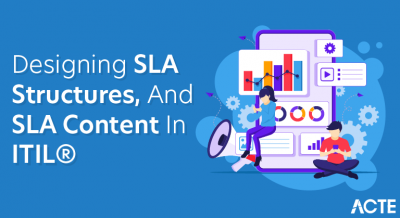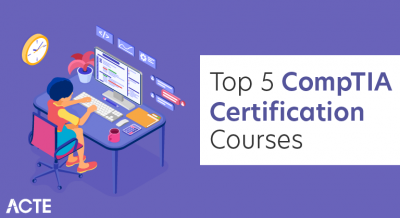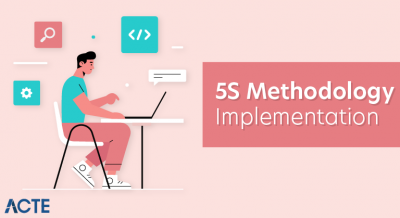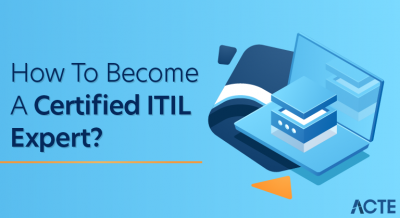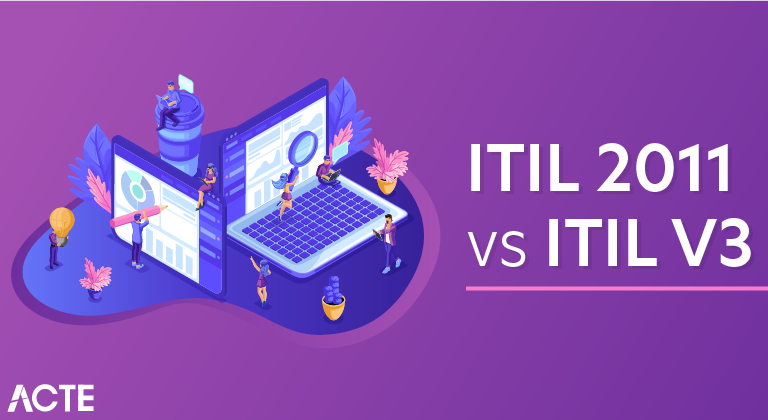
What is ITIL v3?
- You may look at “ITIL 2011” and wonder, why 2011? There must be a newer version of ITIL than 2011. The answer is yes and no. No entirely new concepts have been added to ITIL 2011; however, incremental updates have resolved errors and inconsistencies across the whole suite. In other words, ITIL continues to be updated; there isn’t ITIL 2011, ITIL 2017, etc.
- ITIL v3 was the third version of ITIL. While ITIL v3 is no longer offered, it’s essentially the basis for ITIL 2011, which resolved errors and inconsistencies in the diagrams and text across the entire library.
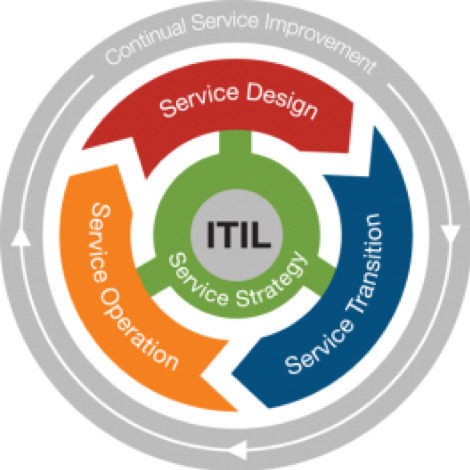
General
- ITIL 2011 has introduced a clearly defined set of strategic processes, including Strategy Management for IT Services and Business Relationship Management.
Strategy Management for IT Services
- Strategy Management for IT Services has been introduced as a new process in ITIL 2011.
- In the previous ITIL V3 (2007) version, strategic assessments and the development of the service strategy were performed under Service Portfolio Management.
- To support the IT Steering Group, the new ITIL role Service Strategy Manager has been introduced.
Service Portfolio Management
- Service Portfolio Management has been re-focused to cover activities associated with managing the Service Portfolio, following the introduction of the Strategy Management process in ITIL 2011.
- Strategic assessments and the development of the service strategy were removed from the process.
- New outputs Service Charter and Service Model have been added.
Demand Management
- The previous edition of the ITIL Process Map treated Demand Management as part of Capacity Management. Since the latest guidance includes clarifications on the differences in scope between Demand and Capacity Management, a dedicated Demand Management process has been introduced as part of Service Strategy.
- The role Demand Manager has been introduced to perform the activities in the Demand Management process.
- The main output of the new Demand Management process is the Pattern of Business Activity (PBA).
Financial Management for IT Services
- No major differences between ITIL V3 (2007) and ITIL 2011 in Financial Management for IT Services.
Business Relationship Management
- Business Relationship Management has been introduced as a new process in ITIL 2011.
- The latest guidance places customer satisfaction surveys and the management of complaints within Business Relationship Management. As a result, the corresponding processes have been moved from Continual Service Improvement to Business Relationship Management.
- The role of Business Relationship Manager has been introduced to perform the activities in the Business Relationship Management process.
- The main outputs from the new Business Relationship Management process are the Customer Portfolio and the Desired Service Outcomes.
Change in Service Design
General
- In ITIL 2011 the process interfaces of all Service Design processes have been adapted following the introduction of the new Design Coordination process.
Design Coordination
- Design Coordination has been added as a new process, in line with the latest ITIL 2011 guidance.
- Design Coordination is now responsible for coordinating the design activities carried out by other Service Design processes. In the previous ITIL version, some of these tasks were carried out as part of the Service Level Management process.
- New: The Service Design Policy provides guidance on how to ensure that a consistent approach is applied to all design activities.
Service Catalogue Management
- No major differences between ITIL V3 (2007) and ITIL 2011 in Service Catalogue Management.
Service Level Management
- Service Level Management has been completely redesigned in ITIL 2011 following the introduction of the Design Coordination process. Coordinating activities have been removed.
- Service Level Management is now mainly responsible for gathering service requirements, as well as monitoring and reporting with regards to agreed service levels.
Risk Management
- No major differences between ITIL V3 (2007) and ITIL 2011 in Risk Management.
Capacity Management
- No major differences between ITIL V3 (2007) and ITIL 2011 in Capacity Management.
- A new output Event Filtering and Correlation Rules has been added, to emphasize that (some) Event filtering and correlation rules should be designed by Capacity Management to support the detection of capacity issues.
Availability Management
- No major differences between ITIL V3 (2007) and ITIL 2011 in Availability Management.
- An additional output Event Filtering and Correlation Rules has been added, to emphasize that (some) Event filtering and correlation rules should be designed by Availability Management to support the detection of availability issues.
IT Service Continuity Management
- No major differences between ITIL V3 (2007) and ITIL 2011 in IT Service Continuity Management.
Information Security Management
- No major differences between ITIL V3 (2007) and ITIL 2011 in Information Security Management.
- An additional output Event Filtering and Correlation Rules has been added, to emphasize that (some) Event filtering and correlation rules should be designed by Information Security Management to support the detection of security issues.
Compliance Management
- No major differences between ITIL V3 (2007) and ITIL 2011 in Compliance Management.
Architecture Management
- No major differences between ITIL V3 (2007) and ITIL 2011 in Architecture Management.
Supplier Management
- No major differences between ITIL V3 (2007) and ITIL 2011 in Supplier Management.
- All suppliers and contracts are managed through the Supplier and Contract Management Information System (SCMIS), which in ITIL V3 was known as the “Supplier and Contract Database (SCD)”.
Change in Service Transition
Change Management
- The structure of the Change Management process has been modified to highlight that significant Changes require authorization at different points in their lifecycle.
- New sub-processes have been added to assess Change Proposals and to implement minor Changes:
- Assessment of Change Proposals, and
- Minor Change Deployment
- Change Management now submits major Changes to the Change Evaluation process for a formal assessment.
- Change Scheduling has been revised so that the detailed planning of a Change and the corresponding Release is performed by Release Management.
- Change Models have been given a more prominent role in Change Management, being used not only for Standard Changes (low-risk Changes on an operational level), but also for recurring significant Changes.
Change Evaluation
- A Change Evaluation process has been added, following a clarification in the ITIL books that the purpose of this process is the evaluation of major Changes.
- Change Evaluation is called upon by the Change Management process at various points in a Change’s lifecycle to perform a Change assessment.
- The results of a formal Change evaluation are documented in a Change Evaluation Report, which is thus the main output of the new Change Evaluation process.
Project Management (Transition Planning and Support)
- Project Management (Transition Planning and Support) has been revised to highlight that its main responsibility is to coordinate the various service transition projects and resolve conflicts.
- Projects are initiated when Service Portfolio Management has chartered a new or substantially changed service.
- The Project Management process now calls upon other processes like Design Coordination and Release Planning to perform planning activities at a detailed level.
Application Development
- No major differences between ITIL 2007 and ITIL 2011 in Application Development.
Release and Deployment Management
- In ITIL 2011, Release Management is called upon from Project Management (Transition Planning and Support) to perform the detailed planning of the Release build, Release test and Release deployment stages.
- Additional interfaces between Release Management and Project Management – Transition Planning and Support have been introduced to make sure that Project Management is constantly provided with current planning information.
- The latest ITIL 2011 guidance also specifies that Minor Changes are implemented by Change Management without the involvement of Release Management, so the Minor Release Deployment sub-process has been removed.
Service Validation and Testing
- In ITIL 2011, additional interfaces between Service Validation & Testing and Project Management have been added to make sure that Project Management is constantly provided with current planning information.
- The ITIL V3 sub-process “Service Design Validation” has been removed as this activity now takes place as part of Change Evaluation.
Service Asset and Configuration Management
- ITIL 2011 requires additional interfaces in Service Asset and Configuration Management, in line with the new structure of Service Transition processes.
Knowledge Management
- No major differences between ITIL 2007 and ITIL 2011 in Knowledge Management.
Changes in Services Operation
Event Management
- Event Management has been updated to reflect the concept of 1st Level Correlation and 2nd Level Correlation.
- The process flows have been updated to reflect the more detailed guidance in the ITIL 2011 books.
Incident Management
- Guidance has been improved in Incident Management on how to prioritize an Incident, including the addition of a new checklist Incident Prioritization Guideline.
- Additional steps have been added to Incident Resolution by 1st Level Support to explain that Incidents should be matched (if possible) to existing Problems and Known Errors.
- Incident Resolution by 1st Level Support and Incident Resolution by 2nd Level Support have been considerably expanded to provide clearer guidance on when to invoke Problem Management from Incident Management. The emphasis is now on restoring services as quickly as possible, and to seek the help of Problem Management if the underlying cause of an Incident cannot be resolved with a minor Change and/or within the committed resolution time.
- Incident Closure and Evaluation now states more clearly that it is important to check whether there are new Problems, Workarounds or Known Errors that must be submitted to Problem Management.
Request Fulfillment
- The Request Fulfillment process has been completely revised to reflect the latest guidance. Request Fulfillment now consists of five sub-processes, to provide a detailed description of all activities and decision points.
- Request Fulfillment now contains interfaces with Incident Management (if a Service Request turns out to be an Incident) and Service Transition (if fulfilling a Service Request requires the involvement of Change Management).
- A clearer explanation of the information that describes a Service Request and its life cycle has been added.
- The concept of Service Request Models is explained in more detail.
Access Management
- An interface between Access Management and Event Management has been added, to emphasize that (some) Event filtering and correlation rules should be designed by Access Management to support the detection of unauthorized access to services.
- A dedicated activity has been added to revoke access rights if required, to make this point clearer.
- It has been made clearer in the Request Fulfilment and Incident Management processes that the requester’s authorization must be checked.
Problem Management
- A new sub-process Proactive Problem Identification has been added to emphasize the importance of proactive Problem Management.
- In Problem Categorization and Prioritization, it has been made clearer that categorization and prioritization should be harmonized with the approach used in Incident Management, to facilitate matching between Incidents and Problems.
- The concept of recreating Problems during Problem Diagnosis and Resolution is now more prominent.
- Problem Diagnosis and Resolution has been completely revised to provide clearer guidance on how this process cooperates with Incident Management.
- Note: The new ITIL 2011 books also contain an expanded section on problem analysis techniques and examples for situations where the various techniques may be applied.
IT Operations Control
- No major differences between ITIL 2007 and ITIL 2011 in IT Operations Control.
Facilities Management
- No major differences between ITIL 2007 and ITIL 2011 in Facilities Management.
Application Management
- Application Management is treated in ITIL as a “function”. It plays an important role in the management of applications and systems.
- Many Application Management activities are embedded in various ITIL processes – but not all Application Management activities. For this reason, at IT Process Maps we decided to introduce an Application Management process which contains the Application Management activities not covered in any other ITIL process.
Technical Management
- Technical Management – treated in ITIL as a “function” – plays an important role in the management of the IT infrastructure.
- Many Technical Management activities are embedded in various ITIL processes – but not all Technical Management activities. For this reason, at IT Process Maps we decided to introduce a Technical Management process which contains the Technical Management activities not covered in any other ITIL process.
Change in Continual Service Improvement (CSI)
General
- One of the important changes between ITIL V2 and ITIL V3 was a new focus on continually improving services and processes. Service Reviews and managing a Service Improvement Plan are since a vital component of Continual Service Improvement (CSI).
- To reflect the new structure of Service Strategy processes in ITIL 2011, the interfaces of the CSI processes have been adapted.
Service Review
- No major differences between ITIL V3 (2007) and ITIL 2011 in Service Review.
Process Evaluation
- No major differences between ITIL V3 (2007) and ITIL 2011 in Process Evaluation.
- The concept of a Process Evaluation Program has been added.
Definition of CSI Initiatives
- No major differences between ITIL V3 (2007) and ITIL 2011 in Definition of CSI Initiatives.
- In ITIL 2011, the CSI Register has been introduced as a central document or database where all improvement opportunities and initiatives are recorded. As a consequence, one of the main outputs from CSI now is the CSI Register – instead of the Service Improvement Plan (SIP) as per ITIL V3 (2007). SIPs now take a much less prominent role as in ITIL 2007 (SIPs may still be used as plans to implement improvements to individual services or processes).
Monitoring of CSI Initiatives
- No major differences between ITIL V3 (2007) and ITIL 2011 in Monitoring of CSI Initiatives.

